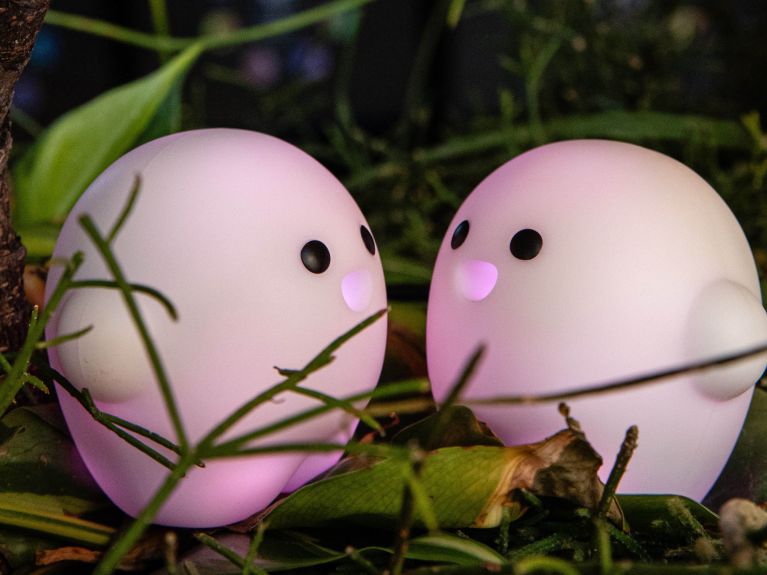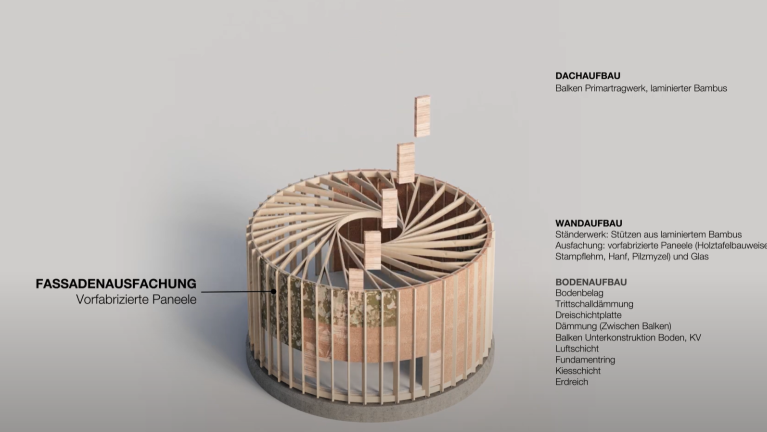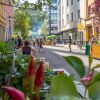“Wa! Germany“: the German pavilion at Expo 2025 in Osaka
Circular economy, green architecture and cute mascots: discover what makes the German pavilion at Expo 2025 so special!

At the Expo in Osaka, you will discover round exhibition spaces with green roofs, interactive information about sustainability in Germany - and a cute mascot with a penchant for anything round: with its architecture and content, the German pavilion fully reflects the idea of a circular economy. Get to know the German pavilion by reading these ten facts!
1. The Expo: a global laboratory for the future
Since the 1990s, world exhibitions have devoted themselves to the major issues of our time. In 2025, the Expo’s motto is “Designing Future Society for Our Lives” – an invitation to think further about the society of the future.
2. “Wa! Germany“ – a meaningful name
The motto of the German pavilion is “Wa! Germany“. “Wa” is a Japanese word that means not only circle and harmony, but also “wow”. And the six round rooms are indeed impressive to look at. The pavilion is particularly fascinating when viewed from above - from the iconographic skywalk of the Grand Ring designed by Japanese architect Sou Fujimoto.
3. A mascot to fall in love with: the Circulars
The Circulars, the German pavilion’s mascots, aren’t just cute, they are also your smart companions as you explore the pavilion. They speak several languages, provide an audio guide service and give directions - making them just perfect for visitors from all over the world!

4. Interactive spaces: experience sustainability
The German pavilion invites visitors to experience the circular economy for themselves. Four exhibition areas and a roof garden offer plenty of opportunities to get involved - you can help design the city of the future, test innovative textiles or chill out on the oversized round sofa. The Circulars will always be on hand to assist.
5. Architecture with a vision
132 tonnes of steel and 140 tonnes of wood went into constructing the basic framework of the German Expo pavilion. And this pavilion is a prototype for the buildings of the future. The steel structure has already been used before and will also be used as a modular system once the Expo is over. The walls of the rooms are made of simple wooden panels, the spaces between being filled with various materials.
Dieses YouTube-Video kann in einem neuen Tab abgespielt werden
YouTube öffnenThird party content
We use YouTube to embed content that may collect data about your activity. Please review the details and accept the service to see this content.
Open consent form6. Innovative building materials: fungal mycelia and hempcrete
Various unusual materials were used to build the pavilion: fungal mycelia, loam and hempcrete. Not only are these building materials sustainable, they are also versatile. They give an idea of how architecture might look in the future - at once eco-friendly and functional.

7. Culinary highlights: the delicious tastes of Germany
The German pavilion also features a restaurant where you can try classic German dishes such as Käsespätzle and pork knuckle. And of course, no meal there would be complete without a German beer! A slice of Germany in the heart of Japan.
8. Worlds of sound in the Garden of Colours
A special surprise awaits in the pavilion’s roof garden: environmental data have been set to music here - creating a world of sound that allows you to hear how plants drink or grow. This sound installation is a homage to Expo 1970 in Osaka, when Germany impressed visitors with the world’s first spherical concert hall and revolutionary sound technologies.
9. Germany’s federal states in the spotlight
Germany’s federal states don’t get short-changed at the German pavilion, either: at a moment’s notice, walls transform into infographics, giving insights into Berlin, North Rhine-Westphalia or Bavaria. In the roof garden, the 16 states introduce themselves in short and often amusing films.
10. Virtual experiences for everyone
If you can’t make it to Japan, you can experience the German pavilion nonetheless: as part of the Virtual Expo, it can be found in the Sky Island section. You can take a digital stroll through the rooms - the perfect solution for anyone who wants to enjoy the Expo from the comfort of their own home.
Expo 2025 Osaka
Expo 2025 Osaka is taking place from 13 April until 13 October 2025 on Yumeshima - an artificial island created in Osaka harbour. It is already the third world exhibition to be held in Japan, following the events in Osaka in 1970 and Aichi in 2005. Around 160 countries are taking part, and roughly 28 million visitors are expected - the German pavilion alone attracting three million of them.



